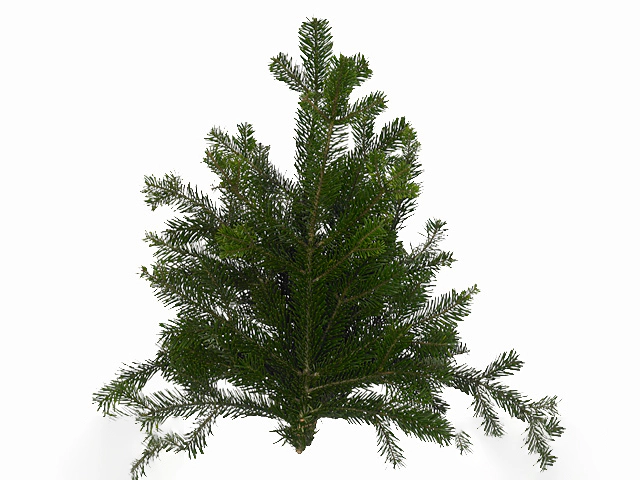Abies nordmanniana per kilo

| Genus | Monoecious |
| Height | 10 - 20 m |
| flowering period | Late spring (May/June) |
| Leaf duration | Evergreen |
| Life span | Long (over 200 years) |
| Shape of tree | Conic |
| Winter hardness | Good (USDA-zone 5, 6) |
| Soil fertility | No poor soils |
| Leaf color | Green |
| soil pH requirement | Indifferent |
| Light conditions | Semi-shades; Sunny |
| Growth rate | Normal; Fast |
| Leaf, main color | Dark green |
| Sensibilité au sel d'épandage | Sensitive |
| Fruit-bearing period (notable) | Autumn (October/November) |
| Fruit color (notable) | Red |
| Moisture requirements | Moist; Wet |
The Abies nordmanniana, also known as the Silver Fir, Nordmann's Fir, Caucasian Fir, or simply the Fir tree, is a magnificent addition to any landscape. With its conic shape and towering height of 10 to 20 meters, this evergreen tree adds grandeur and beauty to gardens, parks, and forests.
One of the standout features of the Abies nordmanniana is its long lifespan, reaching well over 200 years. Its ability to withstand the test of time makes it a popular choice for those seeking a tree that will grow and thrive for generations to come.
The Silver Fir flowers in late spring, typically in May or June. Its blossoms are a sight to behold, adding a touch of elegance and charm to the environment. The tree's green leaves, which are ever-present throughout the year, contribute to its year-round beauty and appeal.
When it comes to soil conditions, the Abies nordmanniana prefers to be planted in fertile soil. It does not thrive in poor soils, so it is important to ensure that the soil is well-nourished before planting this tree. However, the tree is not too picky about soil pH and can adapt to a wide range of acidity levels.
In terms of lighting conditions, the Silver Fir is versatile. It can grow in both semi-shaded and sunny areas, making it suitable for a variety of environments. Its growth rate is classified as normal to fast, meaning it will establish itself relatively quickly and provide ample shade and beauty in a short amount of time.
The Abies nordmanniana stands out in autumn with its fruitful period, occurring in October or November. The tree produces vibrant, red fruits that are visually striking and add a pop of color to the landscape. These fruits attract wildlife, making it a suitable choice for those looking to create an ecosystem within their surroundings.
For optimal growth, the Abies nordmanniana requires moist to wet conditions. Adequate watering is crucial to ensure the tree thrives and remains healthy. Additionally, the tree is sensitive to salt spreading, so it is advisable to keep the tree away from areas where de-icing salts are used.
Overall, the Abies nordmanniana is an exceptional tree that offers both aesthetic value and environmental benefits. Its long lifespan, conic shape, evergreen foliage, and beautiful red fruits make it a desirable addition to any landscape. Whether planted in gardens, parks, or forests, this tree will certainly captivate and impress all who encounter it.
Market availability index by month:
| Jan. | Feb. | Mar. | Apr. | May | Jun. | Jul. | Aug. | Sep. | Oct. | Nov. | Dec. |
|---|---|---|---|---|---|---|---|---|---|---|---|
| 1 | 1 | - | 1 | 1 | - | 1 | 1 | 1 | 2 | 4 | 4 |